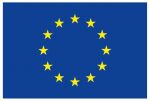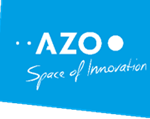Vladimir Vejvoda
Road transport is one of the main mass application fields of satellite navigation systems. Numerous GNSS/GSM applications help to control, manage or watch both fleets and individual vehicles.
In toll collection systems based on communication between an onboard unit (OBU) and electronic toll collection (ETC) infrastructure, the use of GNSS significantly reduces the requirements of this infrastructure. On the other hand, objections concerning long satellite unit installation and the unreliability of correct toll determinations have appeared.
Future European OBUs should operate across all national EU ETC systems, as envisaged by the EC directive on OBU interoperability. OBUs should be also able to provide value-added services to vehicle operators. Princip OBU is part of the effort to create such a satellite device. GSM is used for communication with the tolling system and value-added services and microwave communication used for enforcement and for tolling within microwave ETC systems. The units are technically interoperable with the major EU tolling systems. The unit is the successor of units developed as part of the EUREKA programme. The main focus of development was fast installation, improved satellite position processing, tolled segment determination reliability and the provision of value-added services independent of the tolling function. The unit is controlled and data processed by the neuron network system, which utilises elements of artificial intelligence.
No user discrimination
Thanks to the high sensitivity of satellite positioning data, the unit does not require any external antennas or sensors for auxiliary inertial navigation system. For this reason, the windshield installation concept was selected. The driver can install a non-discrimination version of the OBU in less than 2 minutes, meaning that no discriminative delay is caused to transiting traffic. The unit is powered from vehicle’s lighter socket and its internal batteries ensure its function in the case of the main power being accidentally disconnected.
Tolled road determination
Map matching algorithms process the satellite navigation information and determine the usage of tolled road segments with high reliability. No additional navigation system or roadside equipment for distinguishing between free and tolled roads that may run parallel to each other is necessary.
The mapping data used is organized in blocks for easy upgrades – only several blocks and not whole map need to be upgraded when the road layout changes.
Value added services
Fixed-mount OBUs require about 20 minutes’ installation, but can provide value added services. A second GSM channel (paid for by the vehicle operator) can provide all the usual information (such as the current position and vehicle log). These functions run independently from tolling applications.
Contact:
Princip a.s.
Mr. Vladimir Vejvoda
Radlicka 204/503
158 00 Prague 5
Czech Republic
+420 257 220 251
centrum@princip.cz
www.princip.cz






